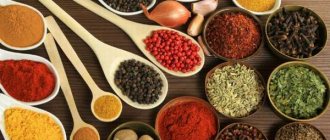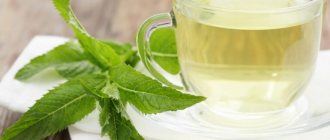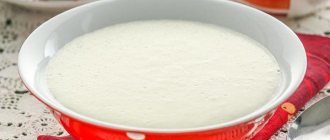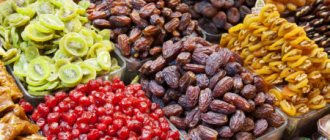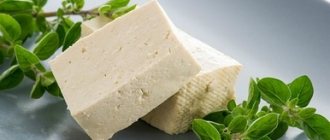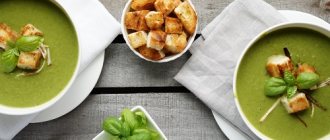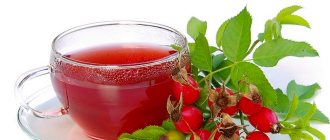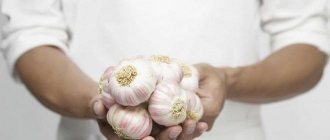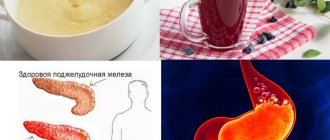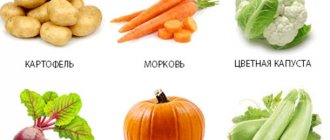Restrictions
For pancreatitis, bread of the highest and first grade should not be consumed. Also, the use of yesterday's product is allowed in limited quantities. No additives are allowed in its composition. To do this, you need to carefully study the composition before purchasing.
The following are not allowed for use at any stage of the product:
- hot;
- baked goods: cheesecakes, flatbreads, buns;
- fresh;
- baking based on shortcrust pastry;
- baked goods based on premium flour;
- fried dough products: chebureki, belyashi, flatbreads.
Bread
- Bread is used for pancreatitis as a substitute for conventional flour products. They are sold in special departments of stores intended for dietary products. The technology for preparing yeast-free bread is adjusted to meet dietary requirements:
- no flavorings or fragrances are used;
- flour from various grains is soaked in barely salted water;
- The dough is rolled out into the thinnest sheets and dried in special ovens.
Adding buckwheat or rice flour to the product diversifies the taste of the bread.
You can eat bread with all dishes:
- with soups;
- as a side dish for fish or meat;
- crumble into salads.
The breads make delicious desserts if you coat them with honey.
Bread is considered a source of energy, proteins, carbohydrates, vitamins and mineral compounds. These necessary substances, of course, are useful for the speedy recovery of an organism weakened by the disease. Therefore, bread for pancreatitis is an important item in the diet.
Interesting:
- Vitamins in bread: A, choline, B1, B2, B6, B9, H, E, PP, beta-carotene.
- Minerals in bread: Molybdenum, potassium, manganese, phosphorus, iron, copper, calcium, iodine, selenium, zinc, chromium, sulfur, sodium, cobalt, chlorine.
On store shelves there is a huge variety of bakery products for every taste. What’s not there: various types of black, wheat bread with the addition of whole grains, bran, buns, crispbread...
Let's figure out how not to buy the “wrong” product, but choose the real “correct” bread, approved by experts for pancreatitis, and also consider which products you should abstain from.
It is not recommended to eat freshly baked bread if you have inflammation of the pancreas due to the fact that it contains a large amount of starchy compounds and yeast, which in turn cause fermentation in the stomach and can lead to discomfort in the intestines. Dried bread has a positive effect on digestion during pancreatitis. It contains vitamin and mineral compounds that help to quickly absorb food and satiate the entire body.
Wheat bread
It is advisable to exclude white bread made from premium or first-grade flour for pancreatitis.
The lower grade flour used for baking, the better and healthier it is, because such bread contains more minerals.
For these purposes, wallpaper flour or second-grade flour is used.
But even such bread needs to be dried before use.
You can make crackers out of it in the oven, drying the slices at low temperatures for about an hour, or simply dry it by spreading it out in the open. The norm of bread per day is 200 grams.
Important! You should not eat baked goods made from wheat flour at any stage of the disease!
Armenian lavash
Armenian lavash is a white bread, so you can eat it if you have pancreatitis, but do it with caution, observing your body’s reaction. Ideally, it should be baked a couple of days before eating and dried. You are allowed to eat no more than 200 grams of pita bread per day, divided into several meals. During remission, you can increase the daily intake to 300 grams.
Having compared the composition of wheat and rye bread, we note that wheat contains 3 times more fats and carbohydrates, and 10% more starch.
But despite all this, you should not eat black bread in the acute period of pancreatitis, since it tends to increase acidity, and the proteolytic enzymes included in its composition can cause discomfort in the stomach.
Therefore, rye bread can be introduced into the diet only after the severe exacerbation has subsided.
However, it should not contain the following additives: prunes, raisins, dried apricots, nuts. And you need to eat it the same way as white - not freshly baked, but yesterday's, dried.
“Doctor’s” bread, which is enriched with protein and bran, is especially useful.
Bread made from whole grain flour has all the positive properties of rye, but does not provoke an increase in acidity, so it is preferable to eat it. But it may contain many unground grain particles, which can injure the stomach and cause pain.
Based on this, it should be administered no earlier than on the 8th day after fasting. The daily dose of 200 grams must be divided throughout the day.
We have all heard about how healthy bran bread is. It contains additives that enrich it with an increased content of iodine and calcium.
It contains a lot of fiber, the use of which is often recommended for diseases of the digestive tract.
Despite this, the consumption of bran in acute pancreatitis should be limited for the reason that the bran present in such bread can increase contractions in the stomach and intestines, which is harmful to the weakened pancreas.
And coarse particles of bran can have an aggressive effect on the stomach wall and increase pain.
Thus, bran is contraindicated during exacerbation. During remission, you can eat them, but be careful.
Now in supermarkets, most often on the diet food shelves, we can find a huge variety of breads made from flour from various grains, which makes them even healthier.
In addition, now on the shelves you can see bread made specifically for patients with pancreatitis.
These breads do not contain dyes or additives to add flavor, so these breads are useful for pancreatitis; they can replace the use of all other types of bread on the patient’s menu.
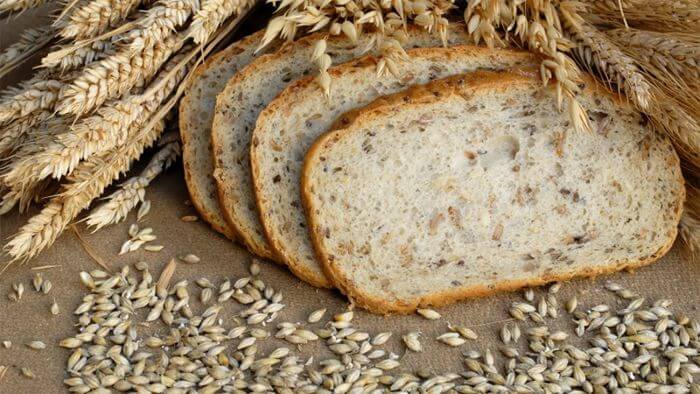
There are many types of bread, but all this variety for people suffering from pancreatitis can be divided into useful and harmful. In this case, it is necessary to take into account what type of bread can be eaten at what stages of the disease.
"Bad" bread
A diet for pancreatitis limits the consumption of bread and can last up to eight months from the moment of relapse.
The most harmful and prohibited types of bread at any stage of the disease include:
- Delicious baked goods.
- White bread made from premium flour.
- Any freshly baked bread.
- Shortbread pastry.
The types listed above are recommended to be consumed very limitedly even after recovery.
Authorized Products
What kind of bread do you eat for pancreatitis?
- products based on rye flour;
- sourdough bread;
- Armenian lavash with sourdough;
- homemade stale bread;
- products based on refined wheat.
When choosing such products, you must be guided by the above restrictions and remember that the bread should be without additives in the form of nuts, sesame seeds and similar powders. These additives can cause irritation in the pancreas.
Nutrition experts recommend baking bread at home for chronic pancreatitis. You can eat this product the very next day. It can also be used to make an approved product such as crackers. They can be prepared for future use, and thereby ensure a certain supply of permitted products.
Whole grain product
This bread has all the great properties of black bread without increasing the acidity. This is a huge plus for pancreatitis. But solid particles, various additives (raisins, coriander, other goodies) are a huge minus. Therefore, whole grain products for illness are allowed, but with restrictions. You should eat it only on the 8th day after fasting. And consume no more than 200g in dried form per day. Yes, and this norm needs to be divided into several steps.

Whatever baked product you choose, it should not be fresh and should not contain additives or spices!
Is it possible to eat crackers with pancreatitis?

It is worth noting that such products, which contain various additives, spices, preservatives and flavor enhancers, are strictly prohibited. Typically, all crackers sold in stores are not suitable for use for chronic pancreatitis. Consumption of such products can provoke an exacerbation of the disease.
Type of bread for crackers
The best for crackers is gray bread. After drying, it continues to contain vitamins and enzymes that help speed up the digestion process. They also help saturate the body, even being a low-calorie product.
Nutritionists advise making crackers, just like bread, with your own hands. There is nothing complicated about this - the bread is cut into small pieces and dried. It is also possible to bake these pieces in the oven until slightly crispy. These crackers can be consumed with soups or drinks. It is worth remembering that you cannot add salt or seasoning to them.
Crackers made from dark varieties of bread are perfectly absorbed by the body. The only limitation on their use is the process of exacerbation of pancreatitis.
Lately, bread has become more and more popular. They are easy to digest and low in calories. Also, in case of inflammation of the pancreas, they are a justified choice when a person does not have the time or opportunity to prepare crackers. Or you just want to diversify your diet. When purchasing them, you must carefully study the composition for the absence of spices and flavor enhancers.
Bagels in the diet of patients with pancreatitis
Bagels are another option for baked goods that can be eaten with pancreatitis. In the acute phase of the disease, their use is prohibited. However, for chronic pancreatitis, bagels are allowed for consumption.
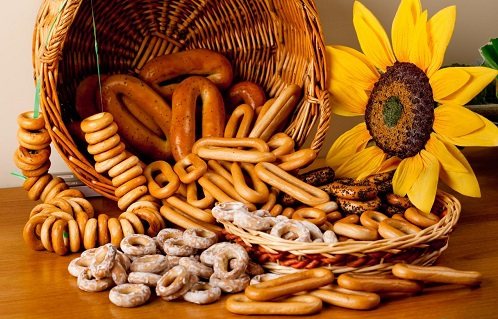
During the remission stage, patients with pancreatitis can diversify their diet with bagels and dryings
This product can be eaten 3-4 weeks after an exacerbation of chronic pancreatitis. Due to the fact that bagels are slightly larger in size than drying ones, you can eat 2-3 of them per day. This amount will be enough for a daily snack. It is recommended not to overuse bagels and eat them no more than 2-3 times a week.
It is ideal to consume bagels with fermented milk products, tea, and unsweetened juices.
Rye and whole grain bread
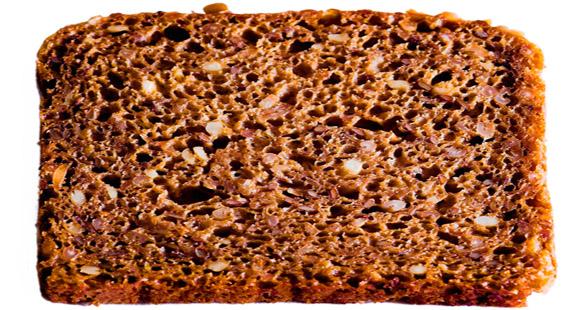
It is strictly contraindicated to consume rye bread during periods of exacerbation of pancreatic inflammation. This is due to the fact that it takes quite a long time to be digested by the body. Also, during the process, its fibers become extremely coarse and can cause stomach irritation. Rye bread can cause heartburn and a feeling of heaviness in the stomach. This is due to the large number of elements responsible for its acidity. After the body enters a state of stable remission, it is allowed to consume rye crackers, adding them to soup or tea. But you should not overdo it with the use of such crackers.
Bread made with bran and whole grain flour is contraindicated for chronic pancreatitis. This is due to the fact that the seeds and grains they contain can harm the stomach and provoke attacks of pain.
Even its permitted types for chronic inflammation of the pancreas must be consumed in small quantities. Also, under no circumstances should you overeat it. The maximum allowed amount per meal is no more than three slices. For better absorption, they can be soaked in soup or tea.
Home Recipes
To avoid unwanted additives that are stuffed into store-bought bread, you can bake the product yourself. For homemade bread, useful for people with pancreatitis, there are two good recipes.
- For 300 grams of coarse flour (necessarily sifted) there is 0.5 tsp. salt, 5–7 g yeast and 1 tbsp. boiled water.
- Yeast is diluted with warm water in a convenient, clean bowl. Add salt. Add flour, stirring the mixture in a circle with a spoon.
- Cover the top of the bowl with cling film. The dishes are left in a warm place for a couple of hours, waiting for the dough to rise and increase 3 times.
- The finished dough is rolled out on a floured surface. Fold in an envelope. Place on a baking sheet lined with parchment (do not grease with oil).
- Cook in the oven for about 40 minutes at 180 degrees.
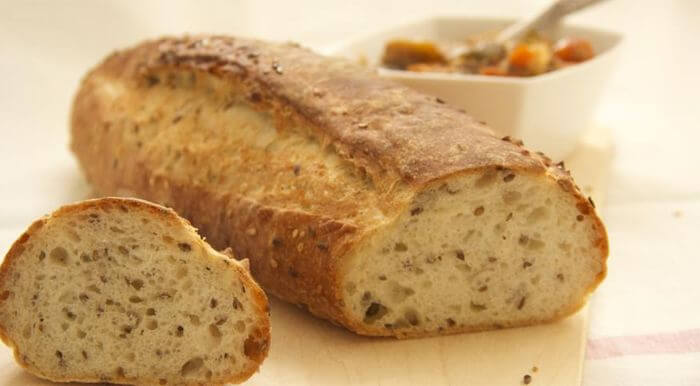
Another simple recipe:
- One tablespoon of sugar and 10 g of yeast are dissolved in a glass of water (boiled, lukewarm).
- After 10 minutes, add 1 tsp. salt and 1.5 tbsp. l. oil (olive, flaxseed or sesame). Stir.
- While kneading with a spoon, gradually add 2 cups of rye flour (or regular flour, grade No. 2).
- The dough is kneaded until it stops sticking to your hands. Then leave it alone in a bowl covered with a clean towel.
- After a while, the dough will rise well, twice as much. It needs to be kneaded again and left in a warm place again. So, twice.
- The finished dough is placed in the chosen form and placed in an oven preheated to 190 degrees.
- In 40 minutes the homemade bread will be ready.
Warning: you can only eat homemade bread the next day.
As a result of inflammation of the pancreas, the production of enzymes involved in the digestive process is disrupted. As a result, the patient is forced to give up foods that provoke acute inflammation, preserving his health. Following a strict diet in such a case is the key to stable remission. Let's study what kind of bread is allowed for pancreatitis.
Those suffering from the disease already know that fresh bread is strictly prohibited; eating fresh baked goods stimulates pancreatic secretion. It is better to choose a loaf made the day before purchase, or use it dried. When purchasing a product, it is important to pay attention to additives; particulate matter increases the disease. The composition requires avoiding nuts, sunflower seeds and sesame.
Eating bread for pancreatitis must be in accordance with a strict diet followed for eight months after the onset of the acute phase of the disease. At each stage of the disease, it is strictly forbidden to eat freshly baked products, rich pastries, or shortcrust pastry products. After recovery, you are allowed to eat such foods in small quantities.
Is it possible to eat rye bread with chronic pancreatitis?
As a result of inflammation of the pancreas, the production of enzymes involved in the digestive process is disrupted. As a result, the patient is forced to give up foods that provoke acute inflammation, preserving his health. Following a strict diet in such a case is the key to stable remission. Let's study what kind of bread is allowed for pancreatitis.
Those suffering from the disease already know that fresh bread is strictly prohibited; eating fresh baked goods stimulates pancreatic secretion.
It is better to choose a loaf made the day before purchase, or use it dried. When purchasing a product, it is important to pay attention to additives; particulate matter increases the disease.
The composition requires avoiding nuts, sunflower seeds and sesame.
Eating bread for pancreatitis must be in accordance with a strict diet followed for eight months after the onset of the acute phase of the disease. At each stage of the disease, it is strictly forbidden to eat freshly baked products, rich pastries, or shortcrust pastry products. After recovery, you are allowed to eat such foods in small quantities.
Types of bread
- Rye (black). It has a heavy texture and is hard and rough when dried. Rye bread contains an abundance of saccharides, carbohydrates and starch. It is better to give preference to black dried, not fresh, loaf. If you add raisins, nuts or other additives to a baked product, you will have to discard the bread even in dried form.
- White.
It is better to exclude it from the diet, especially if the loaf is made from premium or first grade flour. You can eat it only in dried form, making crackers. Armenian lavash is of a similar type. Can be consumed daily or dried. The main thing is to know when to stop and not to overeat, as this will significantly harm a weakened body. - Wholegrain.
The benefit of baked goods is maintaining a healthy level of acidity in the body. Can't be eaten fresh. It is forbidden to use with various additives: raisins, prunes, coriander, etc. The dried version is allowed, with restrictions. After the eighth day of fasting, it is permissible to eat crackers from whole grain bread, up to two hundred grams per day. - With bran.
Since such bread contains plenty of calcium and iodine, there are no spices, little salt, bran bread does not cause much harm to the patient, in small quantities. Bran for pancreatitis exposes the pancreas to unnecessary stress, damaging the walls of the stomach; it is better to avoid such rough foods. An exemplary option would be crackers made from bran bread.
Bread alternative
Rusks become a favorable option for a patient suffering from pancreatitis. You need to be careful when choosing the type of bread. Rye crackers, for example, will cause a negative reaction in the pancreas.
The amount of starch in breadcrumbs decreases along with the evaporation of water during drying; by consuming pieces of this bread, enzymes will not be formed, and digestion will be easy. The safest for the disease are crackers made from gray bread.
If desired, you can make crackers from biscuit.
If crackers are made at home, careful attention is paid to choosing the right bread. The product should not contain chemical additives, spices, herbs, even natural ones. Vegetable fats are also not good for the body, eliminate them.
After selecting the permitted product, the bread is cut into thin slices. Dry thoroughly so as not to injure the stomach or provoke inflammation of the gland.
Crackers should be eaten in small quantities with kefir, herbal tea or liquid dishes.
Ready-made crackers from the store will need to be carefully checked. The product must be free of spices, preservatives, dyes, stabilizers and flavor enhancers. The listed additives will negatively affect human health. Attention must be paid to the integrity of the product packaging. If the package is damaged, patients are not allowed to eat the product.
The main advantage of crackers is considered to be easy digestion, without overloading the body with excess calories and causing a negative reaction in the pancreas. After fasting, small portions of crackers will be beneficial because they contain vitamins, fiber and microelements.
Bread
For those suffering from inflammation of the pancreas, bread can be used to replace bread. Most often sold in the diet food department. Special breads for the sick are offered for sale. Crispbread for pancreatitis will not cause irritation, keeping the pancreas calm, and does not contain flavorings, flavor enhancers, or dyes.
In case of exacerbation of the disease, dietary crackers are perfect as a replacement for other bakery products. Typically, breads contain flour from various grains, hence many beneficial properties.
For patients with advanced diabetes mellitus, buckwheat flour breads are suitable. And for those suffering from diarrhea, rice flour breads are an ideal option.
The products replace the daily dose of bread without losing the benefits for the body and taste.
Acute phase of pancreatitis
The first few days at this stage of the disease you should not eat. Over time, permitted foods are introduced into the diet. The patient needs a source of carbohydrates, energy and vegetable protein. After fasting, bread is included in the diet. Let's say a loaf of yesterday's baked goods or dried white bread made from first, highest grade flour.
Acceptable bakery products are eaten dried; the portion should not exceed 200 grams per day. The permitted varieties, in addition to white, include Armenian lavash, bread from purified varieties and yeast-free bread, which has a choleretic effect.
It is strictly prohibited to consume rye, bran or whole grain bread during the acute period.
Such products affect the formation of enzymes that destroy the tissue of the inflamed gland and, due to excessive gas formation, contribute to bloating and pain.
Remission period
During the quiet stage, the variety of varieties of baked goods expands. For example, daily second-grade white bread with low gluten content is allowed.
It is allowed to consume whole grain products containing fiber, which helps lower cholesterol, eliminate toxins, prevent constipation, and improve the properties of bile.
It would not be amiss to add dietary bread to your diet, exclusively wheat bread with the addition of cereals.
At the end of dietary rehabilitation, it is allowed to consume black bread made from seeded or peeled flour, up to 100 grams per day. It is important that the structure of the product is not rough, which has a negative impact on digestion.
Bakery lovers do not need to give up the product completely. With pancreatitis, it is not forbidden to eat bread from the approved varieties in accordance with the diet. If you follow the recommendations and rules, bread will not worsen your health by causing an aggressive reaction of the pancreas; on the contrary, it will serve as a source of energy.
source
What kind of bread can you eat if you have pancreatitis?
Diet for pancreatitis and cholecystitis is not just abstract nutritional principles; This is part of the treatment, without following the rules of which the medications taken will be wasted money.
This is explained simply: both the pancreas and the gallbladder take the main part in the digestion of food (it is these organs that break down foods to their basic structural elements, which are “understood” by the intestines).
Depending on the nature of the inflammatory process (it can be acute or chronic), you need to either give the organs rest for a while or gently stimulate their work. In the first case, they will be able to recover, in the second, they will not atrophy.
Diet in the acute stage of the process
Nutrition for pancreatitis and cholecystitis in the acute stage or during exacerbation of the chronic process should provide the organs with complete rest, allowing them to recover. For this:
- in the first three days you cannot eat, you can only drink non-carbonated boiled water and sometimes 100-200 ml per day of “Borjomi” or “Polyana kvasovaya”, from which all gases have previously been removed;
- by day 3, if the abdominal pain has passed, you can expand the diet. Warm unsweetened tea, ground vegetable soup without frying, oatmeal or rice porridge cooked in milk and water (1:1), crackers, steamed chicken protein omelette are added to it;
- after another week, low-fat cottage cheese and stewed vegetables (except cabbage) may be allowed;
- if the above products do not increase abdominal pain, do not provoke diarrhea and vomiting, add boiled low-fat fish, soufflé or steamed cutlets from white chicken or turkey meat, semolina and buckwheat porridge;
- only after 1-2 months do they move on to the 5p table, which is recommended for adherence for a long time - about a year.
Source: https://hpt-kld.ru/mozhno-li-est-rzhanoy-hleb-pri-hronicheskom-pankreatite/
